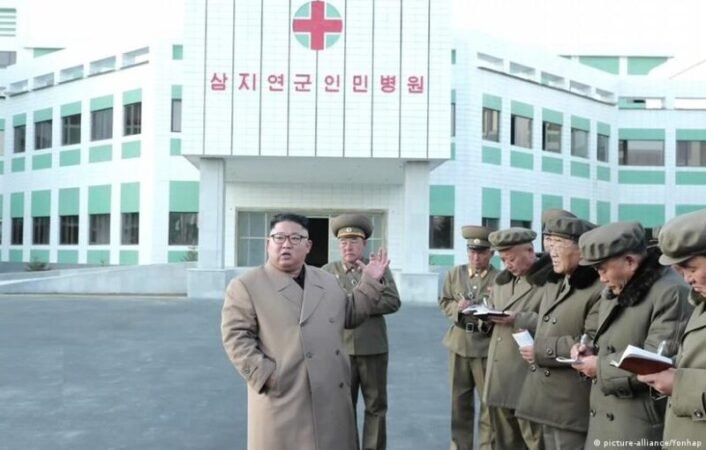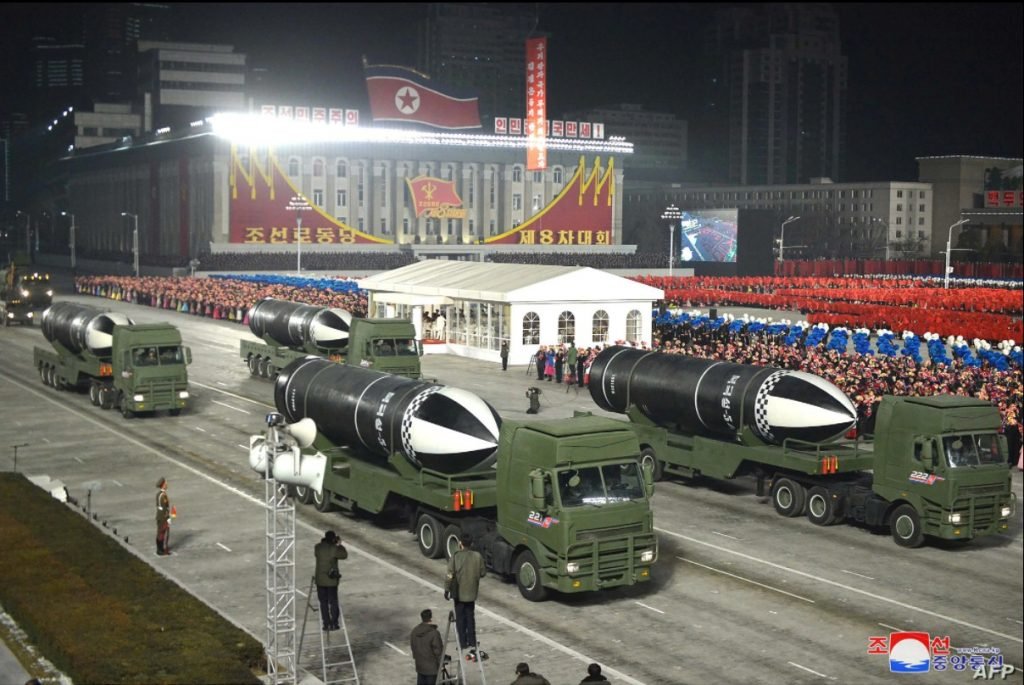Fever Outbreak in North Korea: A Path to Public Health Policy Review and Unification

Abstract: The recent resurgence of the fever epidemic in North Korea provides an opportunity to comment on its public health policy. Since the establishment of the Democratic People’s Republic of North Korea, the development of the country was built like a war economy, but during that construction, some sectors, including public health and food, became pillars.
The state of hospital infrastructure prior to the pandemic failed to account for the possibility of a widespread epidemic. Despite the North’s desire to improve its hospital system, international statistics indicate that North Koreans die primarily from non-communicable diseases such as strokes or heart problems. Hospitals in North Korea are categorized into several classes, and Table 1 provides an overview of the different types of hospitals and their distribution.

North Korean law states: The state must provide every citizen with the benefits of comprehensive medical services free of charge. Workers, farmers, intellectuals who have worked, and all other citizens have the right to free medical care. However, verifying the reality of this law is difficult due to the lack of available data from North Korea. Moreover, it is quite possible to believe that North Korea applies this law.
North Korea has 133 hospitals at the provincial level, 1,608 hospitals at the county level, and 6,263 clinics at the ri (village) level. In the capital city, new hospitals are being built and the extensions of these are being completed. The pandemic has accelerated the construction of new healthcare infrastructure, such as the medical oxygen plant built in Pyongyang during the pandemic to ensure a sufficient supply. COVID-19 treatment often involves artificial respiration with oxygen.
North Korea has faced pandemics before COVID-19. First, in 2003, when the SARS outbreak in China. In response, Kim Jong-il suspended all flights from China, effectively reducing the spread of SARS in North Korea. Second time in 2014, far away from DPRK, a serious pandemic of Ebola arrived. To prevent the virus from reaching the northern territory, Kim Jong-Un halted tourism in Korea and imposed 21-day quarantines. Maintaining the integrity of the nation, the people, and the workers is a priority for North Korea, as a virus can pose a threat to the country’s Juche policy.
A centralized development on the nuclear doctrine:
Social reforms were put in place in the early years of the regime. We can quote the North Korean doctrine on the place of women in society. As well as the rules governing the relationship between man and woman. But very quickly, faced with the enemy of the first hour, Kim Il-Sung’s aspirations, in agreement with Russia and China, grew. North Korea must be able to produce its energy and food accordingly. From the first hours of the regime, the doctrine of the DPRK is clear: its vision of Korea is that of a unified peninsula. After the local wars, the invasion, and the colonization of the empire of Japan, Korean aspirations want lightness and common peace. Even today, Korea is not unified, it is divided. Questions crystallize possibilities of evolution. That of the northern nuclear doctrine is in the front line. This war economy despises joint development, this extreme desire to be self-sufficient is reflected in the Juche ideology. Even today the DPRK gives the illusion of this to its people and to the world. Indeed, the import rate is higher than the export rate. North Korea is no longer sufficient.

Since the pandemic and the changing world, the North Korean nuclear doctrine has become more tough and more offensive against the United States and South Korea, according to the supreme leader.
De facto obsolete health infrastructure:
If we want to qualify the general state of hospital infrastructure in North Korea, we could define it as equal and obsolete. Indeed, in the countryside, the facilities are not at all accurate for minimum service. Often the infrastructures date back to the 1980s. What is more, the all-too-frequent power cuts do not make life easier for surgeons and nurses. When the “epidemic of fever” arrived, as the regime calls it, the hospital infrastructure was overwhelmed, and the regime realized how little pharmaceutical logistics had been developed. Despite this, the regime opted for a treatment strategy that combined traditional Korean medicine with modern drugs. But as we said any foreign thing that will enter the regime would be harmful for the Kim dynasty. But a collaboration between the two countries on the humanitarian level in a first point is possible. This is even vital for the regime which is struggling to feed its population due to international sanctions. As well as its choice to develop weapons without developing its agriculture and infrastructure. The Yoon administration had even offered to help with the delivery of medicines and vaccines, China made the same offer, which was initially rejected by the regime. Subsequently, this strategy worked, the army was deployed, and the Chinese proposition was accepted.
The state of the Korean hospital system is a typical example of this poorly managed and controlled development. There was another model to develop health infrastructure, ensuring military and food security was possible. With a richer and more substantial diet, North Koreans could now better resist the cold and the epidemic of fever.

A path of collaboration towards a possible reunification
Reunification has been the goal of both regimes since the separation of Korea at the 38th parallel. Today we can consult different scenarios. Some are in favor of total reunification. Very much can be conceivable since the past time and the construction of the two regimes. Another track would be the establishment of bridges, commercial, food, tourism, sports between the two countries. Let us apply this case to our public health problem; In the event of a strong collaboration between the two nations. But the reunification rope is often used by the north for help. There have been times when the south has offered plans and help to the north. If we take the example of the bold plan proposed by the Yoon administration, financial and economic aid in return for the denuclearization of the peninsula. This plan was rejected by Pyongyang. This hardly prevents Seoul from maintaining its proposal. Yoon diplomacy is built on firmness in speech and reactions, but with a hand that is always stretched out to the north. If, however, the Kim regime is open to negotiation. We know that reunification would be a threat to North Korea and its regime, which would see many people leave the regime. It is therefore a vital danger for Pyongyang.
References:
Russia’s embassy in North Korea says the country has eased stringent epidemic controls
North Korea Lifts Lockdown in Capital 5 Days After Outbreak Triggered Restrictions
Food security in North Korea
Health and healthcare in North Korea: a retrospective study among defectors
https://www.who.int/dprkorea/our-work
https://www.worlddata.info/asia/north-korea/health.php
https://www.worlddata.info/asia/north-korea/health.php


















